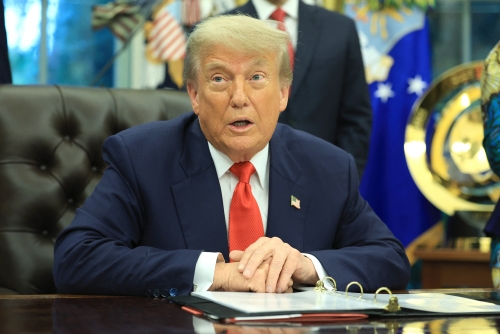Trade Tensions Between the U.S. and Canada: A New Chapter
In a striking move described as retaliation, former President Donald Trump announced the cancellation of trade negotiations with Canada. This decision comes as a direct response to Canada’s digital services tax targeting U.S. tech giants, such as Alphabet, Amazon, and Meta. The stakes are high, with Ottawa expected to inform Washington of its new tariff rates within a week.
Understanding the Digital Services Tax
The crux of the issue lies in Canada’s digital services tax, enacted last year. Aimed at multinational companies providing digital services to Canadians, this tax is projected to generate around Can$5.9 billion (US$4.2 billion) over the next five years. The three percent tax applies specifically to large service providers, placing significant financial burdens on companies that significantly engage with the Canadian market. The Computer & Communications Industry Association has pointed out that U.S. firms could face hefty payments totaling billions when the tax becomes fully effective by June 30.
Trump’s Bold Response
In a post shared on his Truth Social platform, Trump declared, “Based on this egregious Tax, we are hereby terminating ALL discussions on Trade with Canada, effective immediately.” This statement echoes his administration’s tough stance on trade, which has previously prompted tariffs on various imports from Canada, including steel, aluminum, and automobiles. By severing trade negotiations, Trump aims to send a strong message to Canadian authorities regarding what he views as unfair taxation practices.
Canadian Government’s Position
Canadian Prime Minister Mark Carney acknowledged the complexity of the issue, indicating that Ottawa is “adjusting its 25% counter tariffs on US steel and aluminum.” This countermeasure is set in response to the U.S. doubling its own tariffs on these metals to 50%. Carney insisted that the Canadian government would continue negotiations genuinely aimed at benefiting Canadian interests, despite the ongoing tensions. However, he later clarified that he hadn’t spoken to Trump on the day the announcement was made.
The U.S. Treasury Secretary Weighs In
Adding another layer to the unfolding narrative, U.S. Treasury Secretary Scott Bessent remarked to CNBC that Washington had anticipated a “goodwill gesture” from Carney’s government, specifically the halting of the digital services tax. In light of the recent developments, it seems the U.S. is preparing to escalate its actions through the Trade Representative, Jamieson Greer, who may initiate an investigation into the potential damage caused by Canada’s digital levy.
A Parallel Narrative: U.S.-China Trade Relations
Interestingly, the trade discussions between the U.S. and Canada unfold against the backdrop of the evolving relationship between Washington and Beijing. Shortly after Trump’s announcement regarding Canada, the U.S. and China indicated they were finalizing a framework that allows for the continuation of trade dialogues. These discussions have centered around securing essential rare earth materials vital for various sectors, including electric vehicles and national defense.
China, which holds a dominant position in the global production of these materials, recently implemented export license requirements. This move was perceived as a retaliatory action against the tariffs imposed by the Trump administration. However, a series of negotiations in Geneva led to a temporary reduction of tariffs, with both sides sharing a commitment to honor certain agreements moving forward.
Steps Towards Resolution
As part of the newly established framework, China has agreed to expedite reviews and approvals for applications related to export-controlled items, contingent upon compliance with their laws. In return, the U.S. is set to cancel several restrictive measures impacting China. This trade dialogue represents a crucial step toward easing previous tensions, although delays in implementing the framework have raised concerns on both sides.
In this rapidly changing landscape of international trade, the U.S. is navigating a complicated path with both Canada and China. The ongoing dialogue will be pivotal in determining not just economic outcomes but also the broader geopolitical climate, as countries assess their positions in an increasingly interconnected world. With important deadlines approaching and significant financial implications in play, both nations are keenly aware that the stakes have never been higher.


